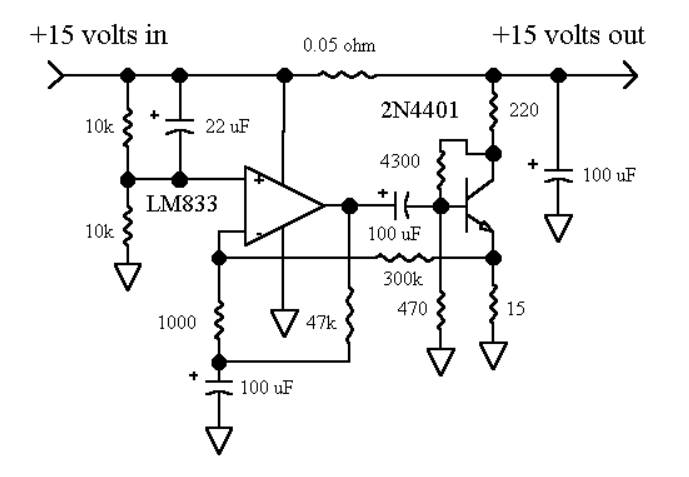digger945,
Yes the load is 100 Ohms for 150mA output current.
as I already said, i don't have test the transient response.
In my own opinion, it's not the main issue in audio PSU.
First, because the regulator in audio appplication is rarely near the
load. So, the transient response is greatly affected by the wiring and
pcb traces (serial inductance in the supply path).
It is therefore essential to add good decoupling capacitors the nearest
possible to the supply pin of each IC to obtain a good transient response.
Sometime, you can add also (with care) some ferrite beads to bypass
some HF noise generated by high speed IC.
Unlike noise testing, transient response measurement is easy.
You need only a oscilloscope and a pulse generator.
If you parrallelling several regulators, probably the output noise will be
divided by the square root of the number of regulator.
For 4 regulators in parallell, the noise will be reduce by Sqrt4=2.
Is is only -6dB !
I don't have done this test, i will try it if i have some time. Ok ?
I don't understand why you want to test the PSU with switching the load ?
What is the final application of your PSU ?
---------
tangent,
Yes, i have add a +20dB stage after the band-pass filter.
It use a LT1007 low noise AOP. Not other noticeable differences.
I don't have tested with a AD797. Maybe (but not sure) it could be
slightly improved noise performance. That said, the AD797 is more
problematic and become unstable more easily than the LT1028.
If you want i can post more info about my measurement tool.
The FFT software is Spectralab 4.32.17.
I don't have try to use the NR system at the output of the JSR06.
I will test it if i have some time.
It is unlikely to change much.
I will search this week other voltage regulators with differents manufacturers.
Their noise specifications will all be measured.
In the noise floor of spectrum, the higher harmonic peak is less than -60dBV(50Hz).
Reffered to the input the level is -140dBV. So corresponding to 100nVrms !
Not a good unit ?
Of course, it is probably possible to get better noise floor using a battery for supply the measurement amplifier. But here, the noise level is not a issue. You must know at this voltage level, many problems occurs.
Thermo-electric noise in this range ! Any connector and parasitics resistances add noise !
A another think is here we measure only in limited bandwidth.
The real total noise is higher. It is the main reason because the noise is expressed in noise density. This value allow to calculate the real noise level you have in your bandwith interest.
Frex.







